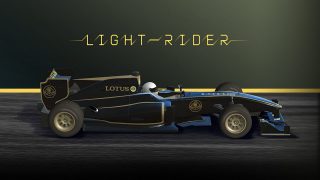The Lotus Philosophy

For over 80 years, Lotus has been the leader in light, sophisticated automotive design. As masters of lightweight architecture, they are the trendsetters of automotive efficiency and simplicity. Some refer to Lotus as the pioneers of minimalist car design, and they have four lines of elegant cars and several competitive racing models to prove it.

Founder Anthony Colin Bruce Chapman was no stranger to education and design, both in and out of school. During his formative years in the late 1940s, he studied structural engineering by day, and built his first trials racing car by night. Using only a power drill and his beginner panel-beating techniques, Chapman converted a 1930s Austin Seven into what was later known as the “Mark 1 Lotus.” After graduating, his national service in the RAF gave him extensive knowledge in aircraft technology, and working for the British Aluminum Company gave Chapman a distinct knowledge of aluminum. It was this winning combination that sparked the Lotus philosophy that still stands today: “Simplify, then add lightness.”
This philosophy has kept lightweight performance at the core of Lotus's design goals. Lotus strives to use the least number of parts possible in its products, focusing on engineering to retain weightlessness and dependability. And to further push the limits, the company has created the “lightweight laboratory,” an employee-wide hub for parts design and critique. It is here where parts are looked at individually in order to decrease weight, while also preserving simplicity. Their efforts to minimize weight in vehicle production have driven the company to the forefront of environmentally efficient vehicle technology.
It has also driven Lotus straight to the racetrack. Lotus has competed in Formula One racing since 1958, and has picked up seven constructors’ titles and six drivers’ titles along the way. Competitive racing has been a natural progression for a brand known for innovation and extremely light cars. The 2015 Lotus Exige 360 Cup weighs in at 1125kg (2,480 pounds), the 2015 Lotus 3-Eleven weighs 890kg (1,962 pounds), and the 2011 Lotus Type 125 weighs in at 590kg (1,300 pounds). Each of these models reach 60 mph in under 4 seconds. Still, with all of these accomplishments, pushing the Lotus “lightweight” philosophy forward to new levels remains an everlasting aspiration for all who carry the torch of Anthony Colin Bruce Chapman.
The Lotus Exige 360 Cup, Lotus 3-Eleven, and Lotus Type 125 are all available now!
Download Real Racing 3 here!*
Be sure to follow Real Racing 3 on Facebook, Twitter, and Instagram for the latest news and updates.
Follow Lotus Cars on Facebook, Twitter, and Instagram
*Includes in-app purchases. Network fees may apply.

